Affiliate Software Checklist: Leader Generation 2024

Businesses encounter many hurdles in maximizing affiliate marketing in today's competitive landscape. Tracking leads, managing affiliates, and optimizing campaigns can be difficult. Our detailed Affiliate Software Checklist addresses these issues and provides a success plan. Lead monitoring, thorough tracking, and reporting & analytics help firms attribute leads, optimize marketing campaigns, and obtain insights. Our checklist also includes quick onboarding, secure integration, and open communication to ensure smooth operations and solid affiliate relationships.
Key Features of Affiliate Software
Understanding the core features of affiliate software is essential for success in any affiliate program. By mastering these, businesses can maximize their affiliate program's effectiveness, drive growth, and confidently achieve their marketing objectives.
Lead Tracking
Lead tracking is the cornerstone of any successful affiliate program. It ensures accurate lead attribution to affiliates, allowing businesses to compensate their partners somewhat based on performance. 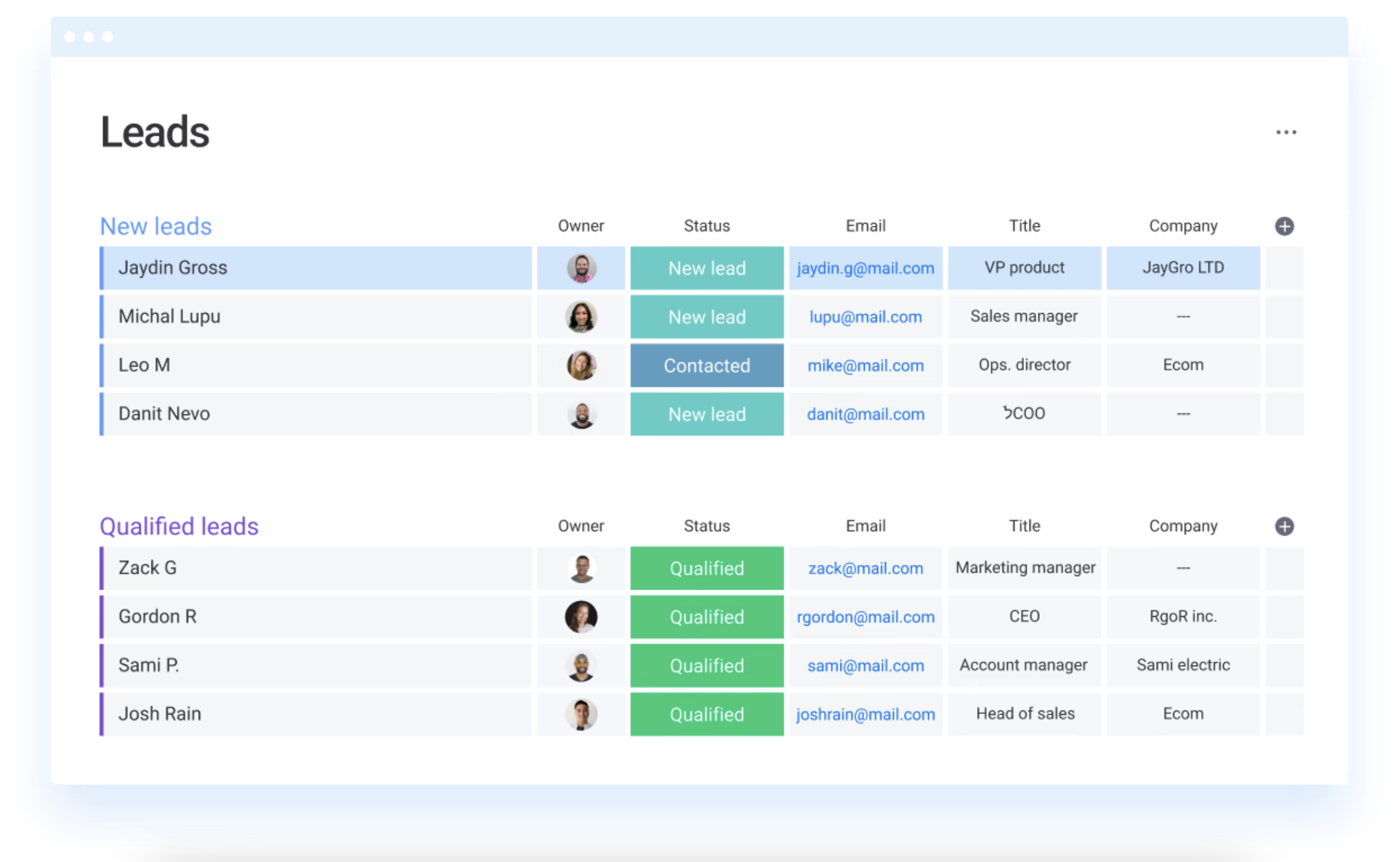 Key Metrics for Lead Tracking:
Key Metrics for Lead Tracking: 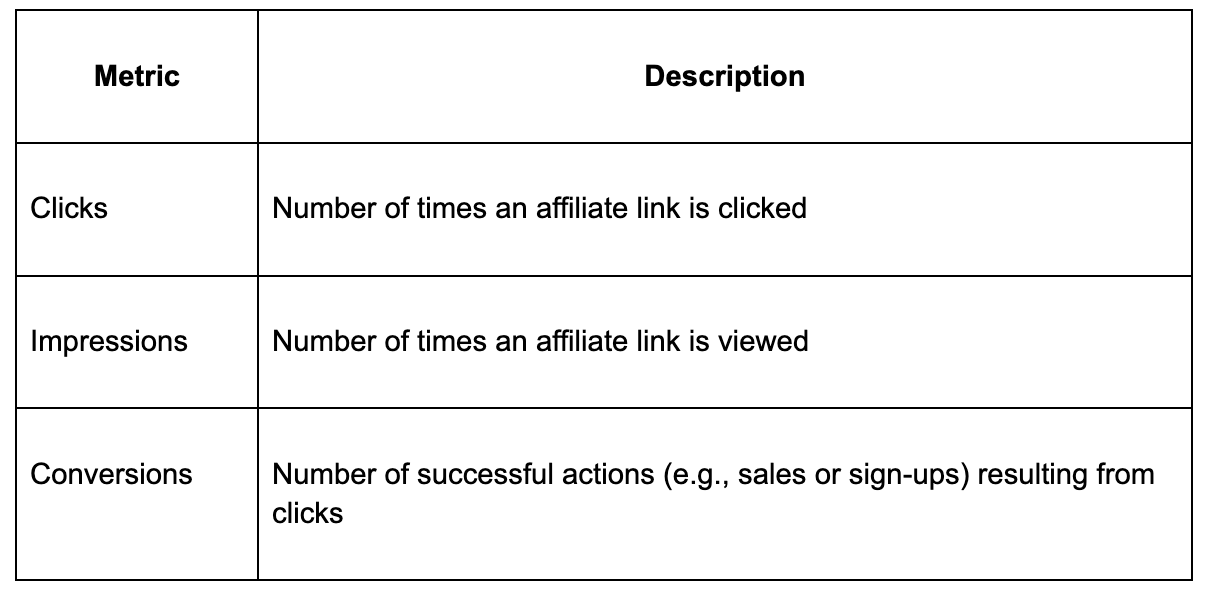 By utilizing robust tracking tools, businesses can gain valuable insights into the effectiveness of their affiliates and campaigns. Custom parameters allow for detailed tracking, helping to identify which affiliates are driving the most valuable traffic.
By utilizing robust tracking tools, businesses can gain valuable insights into the effectiveness of their affiliates and campaigns. Custom parameters allow for detailed tracking, helping to identify which affiliates are driving the most valuable traffic.
Affiliate Management
Effective affiliate management encompasses various tasks, including recruitment, communication, and ongoing support for affiliates. Key Aspects of Affiliate Management: 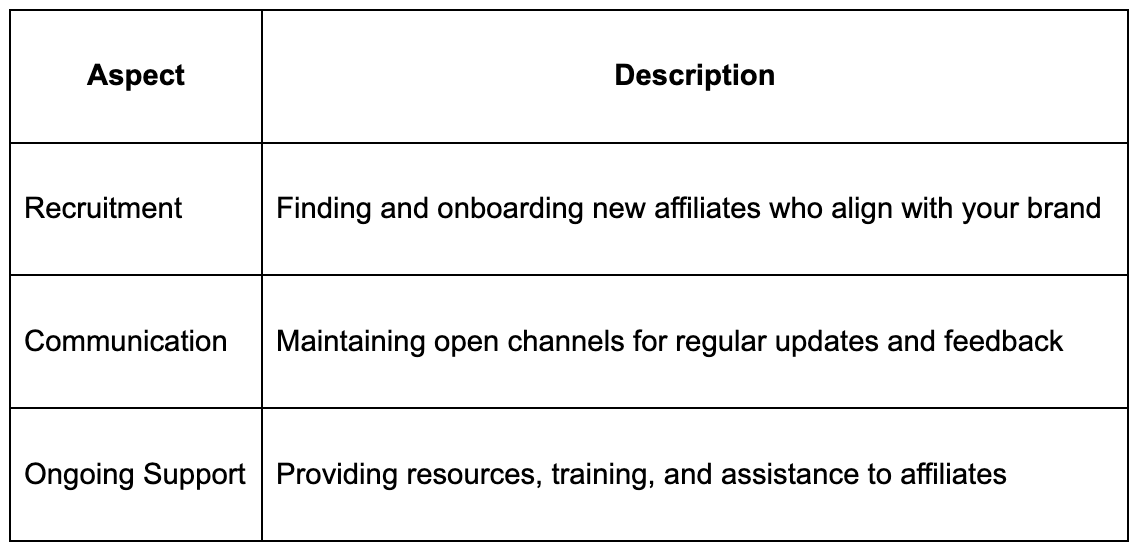 Benefits of Effective Affiliate Management:
Benefits of Effective Affiliate Management:
- Increased Engagement: Strong communication and support keep affiliates motivated and engaged.
- Better Performance: Well-managed affiliates are more likely to perform effectively, driving more leads and sales.
- Efficient Campaign Monitoring: Regular updates and feedback help optimize affiliate campaigns for better results.
A streamlined management process ensures that affiliates are onboarded efficiently, equipped with the necessary resources, and kept informed about campaign updates and performance metrics. Open communication channels and dedicated support further facilitate collaboration and foster strong relationships between businesses and their affiliates.
Campaign Monitoring
Campaign monitoring involves tracking metrics and analyzing data to optimize marketing strategies. By tracking key metrics and analyzing data, businesses can gain valuable insights into the success of their affiliate campaigns. Key Metrics for Campaign Monitoring: 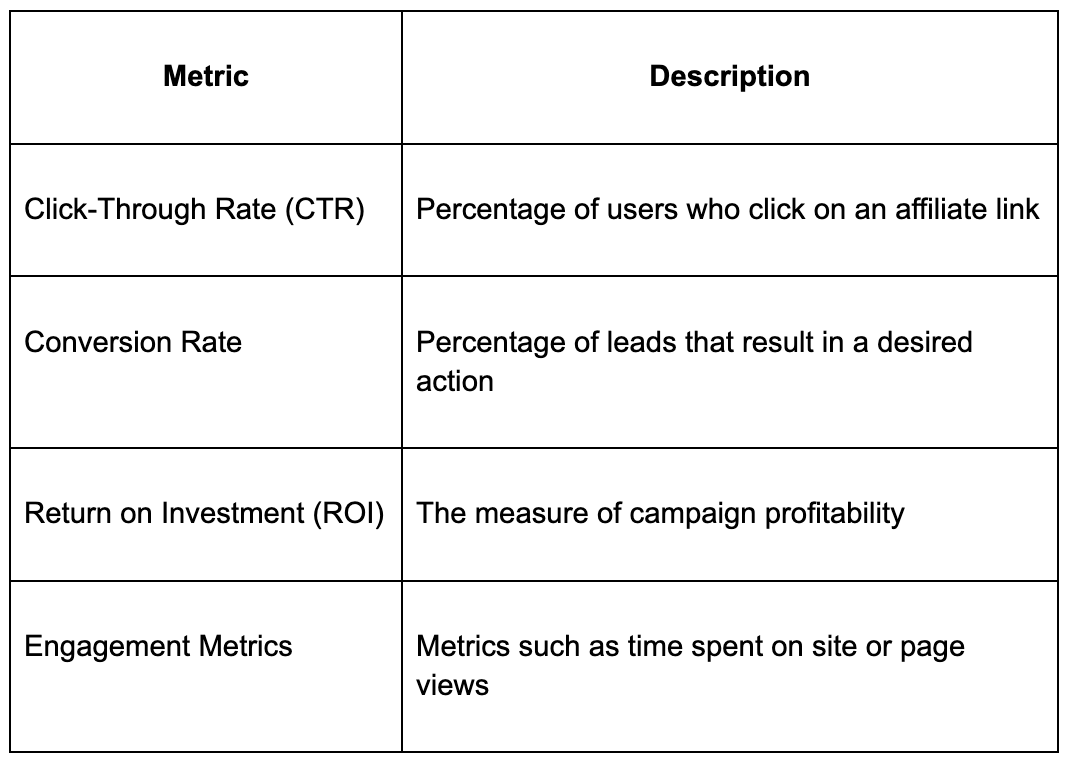 Benefits of Effective Campaign Monitoring:
Benefits of Effective Campaign Monitoring:
- Performance Optimization: Identify underperforming campaigns and make necessary adjustments.
- Budget Allocation: Allocate resources effectively based on campaign performance.
- ROI Measurement: Evaluate the overall success and profitability of marketing campaigns.
Through consistent campaign monitoring and analysis of success metrics, businesses can guarantee that their affiliate marketing efforts are generating the intended results and maximizing their return on investment.
Commission Handling
Commission handling is a critical aspect of affiliate program management. It ensures fair compensation for affiliates based on their performance. This process involves automating calculations and payouts, streamlining operations, and reducing the risk of errors. Key Components of Commission Handling:
- Automation: Utilizing software to calculate commissions and automate payout processes.
- Performance-Based: Determining commissions based on affiliate performance, such as sales or leads generated.
- Flexible Structures: Offering various commission types, including percentage-based, fixed-rate, or milestone-driven.
Benefits of Effective Commission Handling:
- Accuracy: Minimizing errors in commission calculations and payouts.
- Transparency: Providing affiliates with clear and timely compensation based on their performance.
- Incentivization: Motivating affiliates to perform better by offering fair and competitive commissions.
By implementing robust commission-handling practices, businesses can maintain positive relationships with affiliates, drive performance, and ensure the overall success of their affiliate program.
Reporting & Analytics
Reporting and analytics play a crucial role in optimizing affiliate program performance and driving growth. These tools provide valuable insights into affiliate activity, campaign effectiveness, and overall program ROI. Key Insights Provided by Reporting & Analytics: 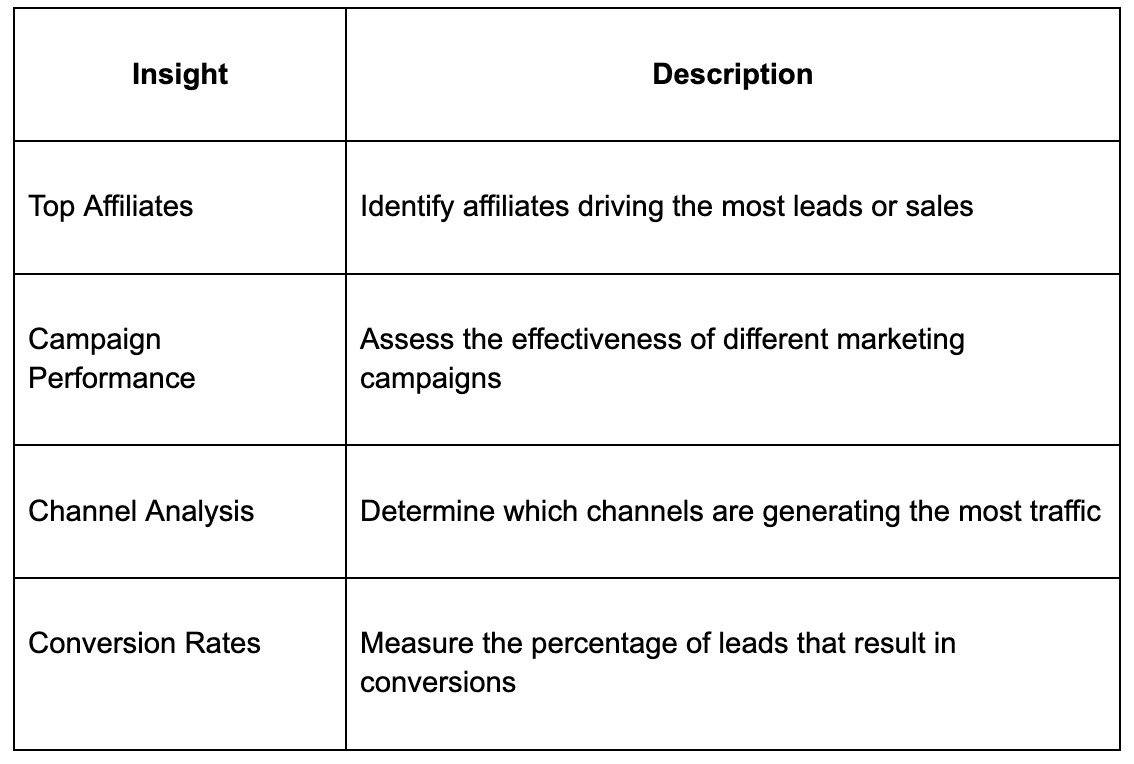 Benefits of Reporting & Analytics:
Benefits of Reporting & Analytics:
- Data-Driven Decisions: Make informed decisions based on actionable insights.
- Optimization: Identify areas for improvement and refine marketing strategies accordingly.
- Performance Evaluation: Assess the overall effectiveness of the affiliate program and individual affiliates.
Businesses can use comprehensive reporting tools to discover top-performing affiliates, evaluate the performance of various marketing channels, and improve their plans to achieve ideal results. Companies with access to real-time data can make decisions based on accurate information and continuously optimize their affiliate marketing efforts to achieve the most possible impact.
Essential Capabilities
For a successful affiliate program, it's crucial to incorporate essential capabilities that enhance performance and efficiency. These include the following features below, all designed to optimize affiliate management and drive growth:
Flexible Commission Structures
Flexible commission structures are crucial for effectively incentivizing affiliates. Businesses can offer percentage-based commissions, fixed-rate commissions, or milestone-driven commissions to align with their specific goals and budgets. This flexibility allows companies to create attractive incentives that motivate affiliates to perform at their best, driving more leads and sales.
Robust Tracking
Robust tracking capabilities are essential for accurately measuring affiliates' performance. This includes tracking leads, clicks, impressions, and sales across various channels with custom parameters. By implementing comprehensive tracking, businesses can gain detailed insights into which affiliates are driving the most value, enabling them to optimize their marketing strategies and improve ROI. Source: Travelpayouts
Easy Onboarding
An easy onboarding process ensures that new affiliates can start promoting quickly and efficiently. This involves an intuitive signup process, customizable portals where affiliates can manage their campaigns, and automated communication to keep them informed. A streamlined onboarding experience enhances affiliate engagement and retention, contributing to the overall success of the program.
Secure Integration
Secure integration with existing systems is vital for maintaining data integrity and streamlining workflows. This includes syncing with CRMs and analytics platforms and ensuring robust data security measures are in place. Secure integration helps centralize data, making it easier to manage and analyze affiliate performance while safeguarding sensitive information.
Open Communication
Open communication channels are essential for maintaining strong relationships with affiliates. Built-in messaging systems, a comprehensive knowledge base, and dedicated support ensure that affiliates have access to the information and assistance they need. Transparent and efficient communication fosters trust and collaboration, leading to more effective and sustained affiliate partnerships.
Advanced Affiliate Software Features
For businesses looking to elevate their affiliate programs, implementing advanced capabilities is crucial. These features provide enhanced functionality and deeper insights, driving more effective strategies and better performance outcomes.
Custom Affiliate Portals
Custom affiliate portals are tailored hubs where affiliates can manage their campaigns efficiently. These portals enhance the user experience and provide a centralized location for all affiliate activities. Benefits:
- Customizable Interface: Tailor the portal to reflect your brand identity, making it user-friendly and engaging for affiliates.
- Centralized Access: Affiliates can access resources, performance reports, and communication channels in one place.
Tiered Rewards & Campaigns
Tiered rewards and campaigns incentivize affiliates to achieve higher performance levels by offering increasing rewards based on their success. Tiered Rewards Example:  Segmented Campaigns:
Segmented Campaigns:
- Targeted Campaigns: Design specific campaigns for different affiliate segments based on their strengths and traffic sources.
- Performance-Based Incentives: Reward top performers with exclusive offers and higher commissions.
Traffic Analysis & Fraud Prevention
Advanced traffic analysis and fraud prevention are crucial for maintaining the integrity of an affiliate program. These features help identify genuine traffic and detect fraudulent activities. 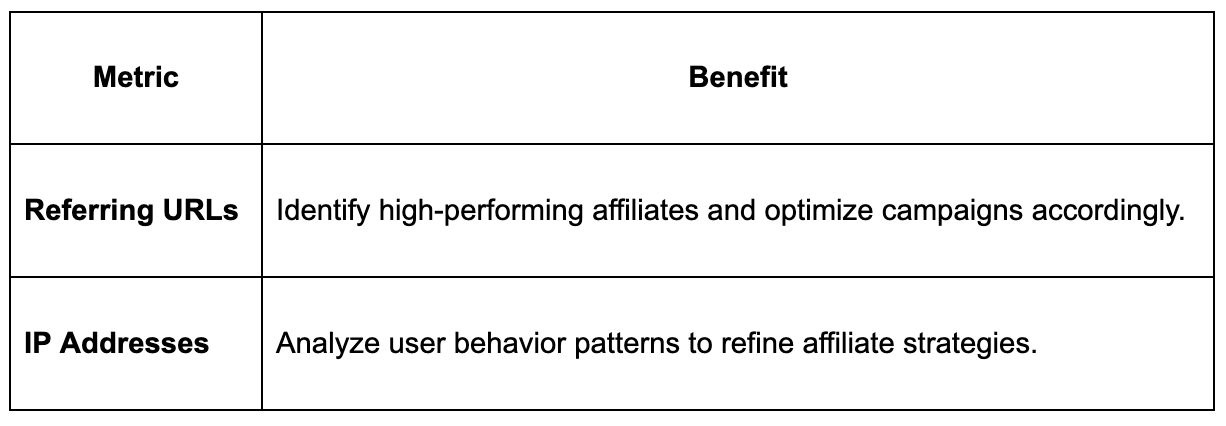 Fraud Prevention Safeguarding the integrity of an affiliate program is paramount. Top-tier software incorporates sophisticated fraud detection mechanisms to combat click fraud, fake conversions, and other deceptive practices.
Fraud Prevention Safeguarding the integrity of an affiliate program is paramount. Top-tier software incorporates sophisticated fraud detection mechanisms to combat click fraud, fake conversions, and other deceptive practices.  By leveraging these advanced features, businesses can effectively scale their affiliate programs, foster stronger relationships with top-performing affiliates, and maintain a competitive edge in the ever-evolving landscape of affiliate marketing.
By leveraging these advanced features, businesses can effectively scale their affiliate programs, foster stronger relationships with top-performing affiliates, and maintain a competitive edge in the ever-evolving landscape of affiliate marketing.
Choosing the Right Software
Selecting the ideal affiliate software is crucial for maximizing your program's effectiveness. Here are some tips to help you make an informed choice that aligns with your business goals.
Scalability
Scalability is a critical factor when choosing affiliate software. The software should be able to grow with your business, accommodating an expanding network of affiliates and increasing data volumes without compromising performance.  Choosing a scalable solution from the outset can save you from the headache and costs associated with migrating to a new platform down the line. User Reviews & Support Evaluating user reviews and support quality is essential to ensure the software meets your needs and offers reliable assistance. User Reviews:
Choosing a scalable solution from the outset can save you from the headache and costs associated with migrating to a new platform down the line. User Reviews & Support Evaluating user reviews and support quality is essential to ensure the software meets your needs and offers reliable assistance. User Reviews:
- Real-World Feedback: Gain insights into the software’s usability, performance, and reliability from actual users.
- Overall Ratings: Compare the overall ratings and reviews across multiple platforms to get a comprehensive view.
Support: 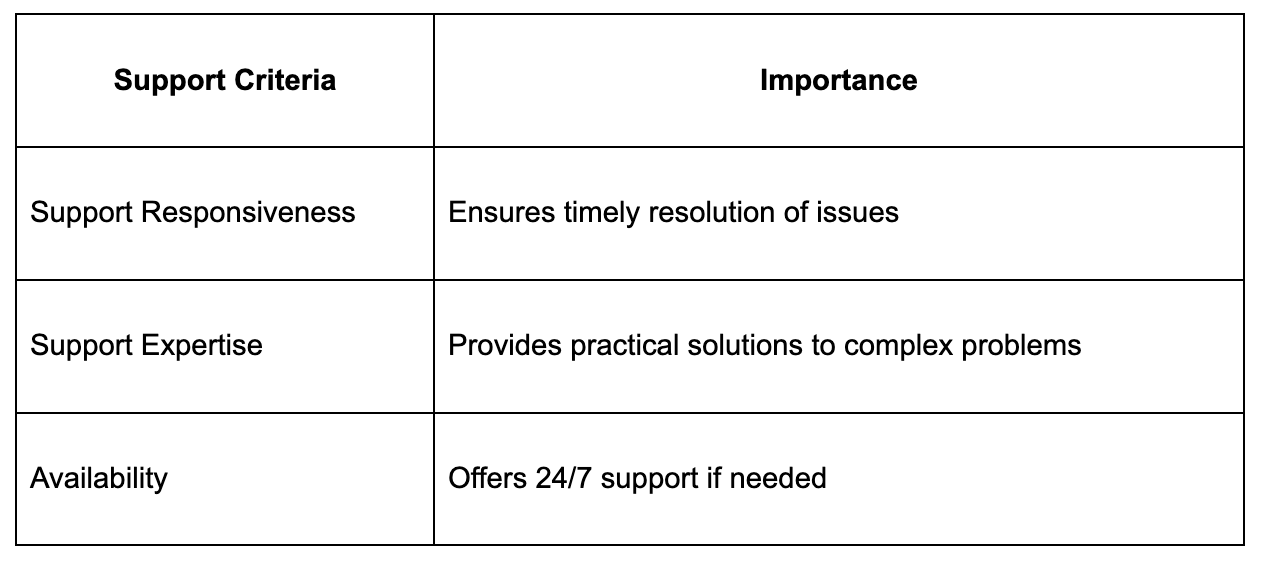
Integration Capabilities
The right software should integrate seamlessly with your existing systems, such as CRMs and analytics platforms, to streamline data management and enhance operational efficiency. Integration Capabilities:
- CRM Integration: Sync affiliate lead and customer data with your CRM for seamless sales follow-up.
- Analytics Platform Connectivity: Consolidate affiliate metrics alongside other marketing data for holistic insights.
Summary
Choosing the right affiliate software is crucial for effective lead generation and driving growth through your affiliate marketing program. This checklist serves as a practical guide to help marketers evaluate and select the ideal software solution tailored to their specific needs.
Key Considerations
When selecting affiliate software, consider the following essential factors: 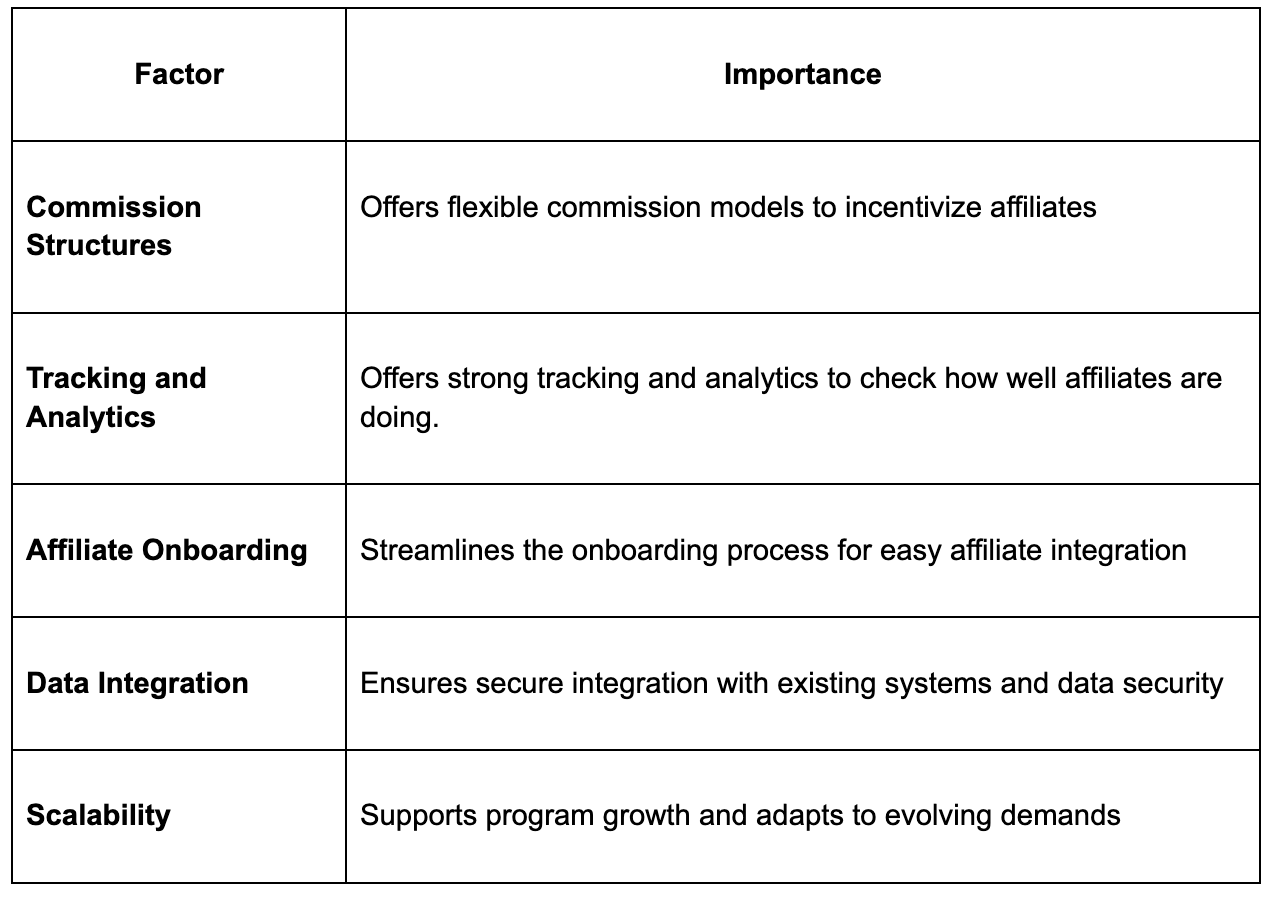
Evaluating Software Options
In addition to these essential factors, looking at user reviews and the quality of the vendor helps to learn more about how well the software works in the real world and how committed the vendor is to making sure customers are happy. Using this list, marketers will be able to easily navigate the wide range of affiliate software options and make a choice that fits their lead generation and long-term business goals.


 Lead generation is the process of finding and attracting potential customers for a business. It involves identifying and targeting people or companies that might be interested in your products or services and guiding them through the early stages of the sales process. The main goal of lead generation is to create a steady flow of qualified leads - people or companies that have shown interest and may be ready to make a purchase. Leads are crucial for businesses to keep growing, as they represent future revenue opportunities.
Lead generation is the process of finding and attracting potential customers for a business. It involves identifying and targeting people or companies that might be interested in your products or services and guiding them through the early stages of the sales process. The main goal of lead generation is to create a steady flow of qualified leads - people or companies that have shown interest and may be ready to make a purchase. Leads are crucial for businesses to keep growing, as they represent future revenue opportunities.

